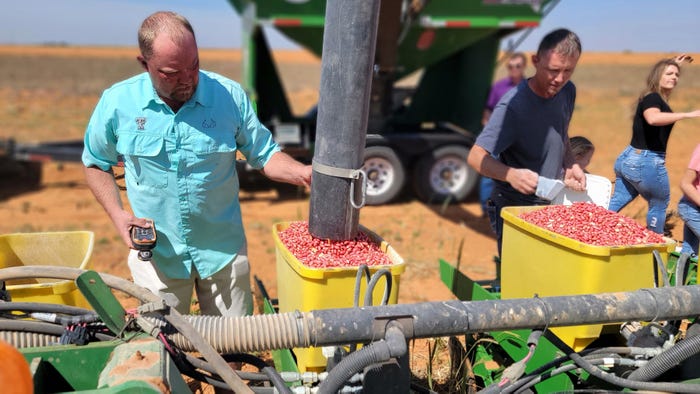
In-season moisture is critical for peanut production in Oklahoma and Texas. While producers in both states have access to irrigation, the last couple of years Texas’ systems have struggled to keep pace with peanut moisture demand.
“Water availability has been dropping for several years, especially after two consecutive years of drought,” says Emi Kimura, Texas AgriLife Extension agronomist, Vernon. “Growers wells are not filling. Many growers in West Texas do not have enough irrigation water, and they did not get enough rain the last two years.”
Kimura recommends producers cut back and plant a half a circle rather than a full circle of peanuts. “Growers should evaluate how much water they have so they can use it more efficiently,” she says.
Dryland crops such as cotton or grain sorghum can be planted on the other half. “We can’t grow peanuts here without irrigation, but we can grow dryland cotton, or use less water on it and conserve water for the peanut crop,” Kimura says.
Oklahoma irrigation capacity
Oklahoma’s irrigation capacity in the Fort Cobb, Hydro area, where most of the state’s peanuts are grown, is “fairly good,” says Oklahoma State University Integrated Pest Management Specialist Maxwell Smith, Altus.
Area producers irrigate from the Lugert-Altus Irrigation District. “We need some rain up around Sayre to get some water running down the river to fill Lake Lugert,” Smith says.
“We've had some rains right over the lake, but it takes rain upstream to get water in it. We're on the verge of being able to water once. If we get one good rain event and a good rain upriver, it could change the outlook. Two or three good rains would significantly change the outlook.”
Peanut planting tips, acres
As a new season begins, Kimura advises peanut growers to make certain they have fertilizer recommendations in order, get soil tests done, and pay attention to timing throughout the season. She also cautions producers to watch for pest issues. “We have not had much disease pressure the past two years because it was so dry.” This year could be different.
Texas’ planted peanut acreage estimates range from 170,000 to 220,000. Kimura guestimates the acreage will be between 190,000 to 200,000. “That's coming from an optimistic agronomist,” she says.
Smith anticipates 14,000 to 16,000 acres in Oklahoma. “It may be up just a hair this year,” he says. “I have heard that some growers were trying to get a few more acres in, but I don’t know if they were able to. Most are planning for about what they had last year.”
Kimura is hopeful for a more favorable outcome to the 2024 crop. “I think we’ve had enough rough years for peanut and cotton growers,” she says. “So, I am optimistic, looking for a better year. Even though the National Weather Service is forecasting the weather will be dry and hotter, I still want to be optimistic. I hope that will be the case.”
Read more about:
IrrigationAbout the Author(s)
You May Also Like








